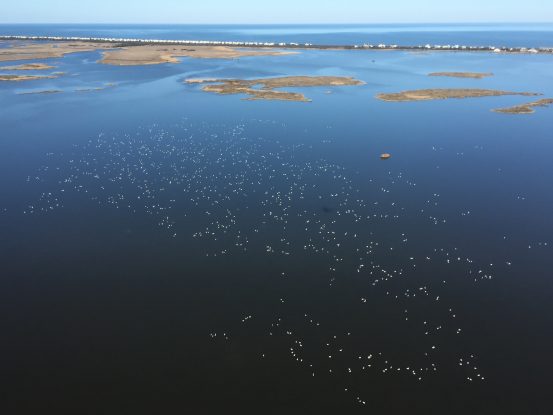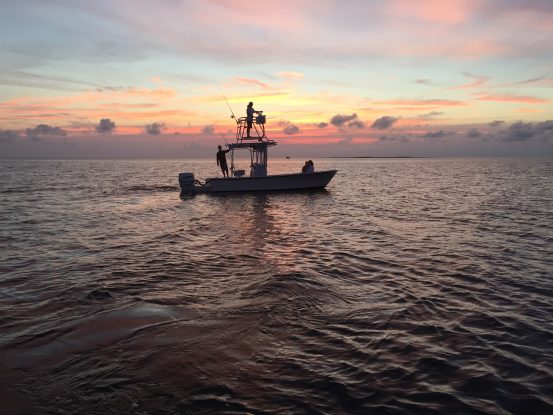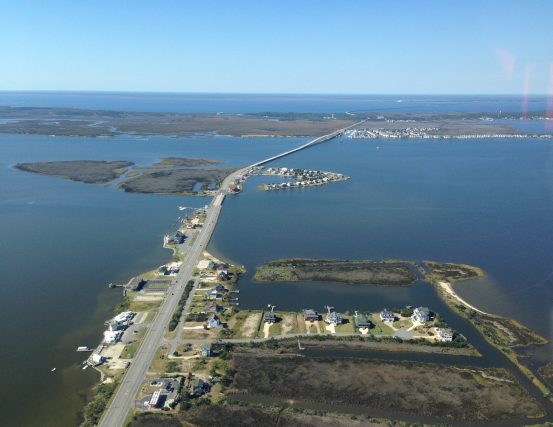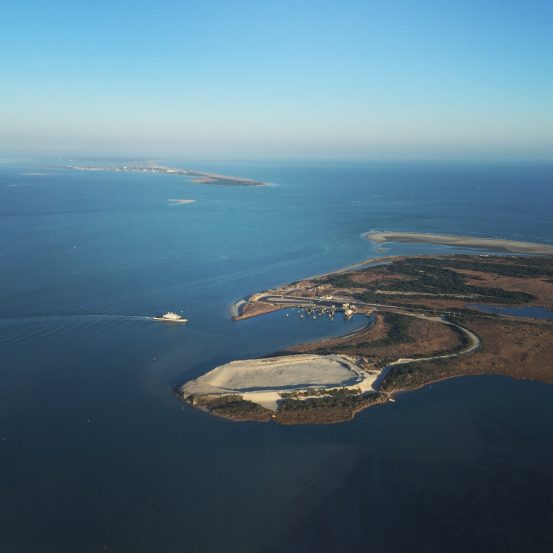For those of us who migrated to the Outer Banks as adults, one of the most confusing parts of the local language was the casual use of the various sounds as a way to give a location. It’s still done today, and anyone who’s lived here ten years or more is probably just as guilty as a native of saying, “I was out on Croatan Sound,” thinking that immediately describes a location to a visitor.
My hope is this blog serves as one part geology and one part linguistic lesson to clarity our local sound waters. There are five sounds that border the Outer Banks. From north to south, they are the Currituck Sound, Albemarle Sound, Croatan Sound, Roanoke Sound and Pamlico Sound. There is no clear delineation indicating when one sound ends and the next begins, simply a general understanding of areas that define these waters.
Currituck Sound
Extending north from the Wright Memorial Bridge to Sandbridge in Virginia Beach, the Currituck Sound is a narrow and long body of water. Relatively free of islands on the south end, the north end is dotted with islands and shallows. Most islands are very small, although Knott’s Island supports commercial farming and a small community.

At one time the Currituck Sound was one of the most popular sites on the East Coast for hunting migratory waterfowl with over 100 hunt clubs dotting its shores.
Albemarle Sound
Formed by the confluence of the Roanoke and Chowan Rivers 55 miles west of the Outer Banks, the Albemarle Sound forms the western boundary of most of the central Outer Banks. It is also the western boundary for the peninsula that creates much of the southern portion of Currituck County. The Currituck Sound is located on the other side of the peninsula.

An important part of the Intercoastal Waterway, it’s considered one of the easier stretches to navigate with relatively few shoals.
Croatan Sound
Separating Roanoke Island from the mainland, the Croatan Sound is the most recently formed of the Outer Banks bodies of water. Until Roanoke Inlet, which was due west of Manteo, silted over in 1811, the eastern side of the island was a swampy morass connected to the mainland.
When the inlet closed, water flowing from the Albemarle Sound began cutting a channel through the marsh. Today Croatan Sound is unique among the sounds, maintaining depths of 15’ to 20’ without dredging.
Roanoke Sound
The Roanoke Sound is a narrow body of water separating Roanoke Island from the south end of Kill Devil Hills and the town of Nags Head. At one time, Roanoke Sound was wider and deeper than it is today. This is the body of water that the first English settlers used to access the Lost Colony.

When Roanoke Inlet closed in 1811, there was not as much flow or current to the water and the coastlines, especially on Roanoke Island, began to fill in.
Pamlico Sound
Huge and shallow, the Pamlico Sound extends from Oregon Inlet on the north end to the southern tip of Ocracoke Island. Thirty miles across at its widest, when early explorer Giovanni da Verrazzano first laid eyes on it, he was convinced it was the Pacific Ocean.

Hatteras Island and Ocracoke form the eastern barrier to the sound. To the south, Pamlico Sound connects with Core Sound forming the Core Banks.
